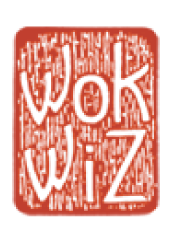
Welcome to San Francisco’s Chinatown
By Shirley Fong-Torres
One of San Francisco’s most popular destinations for visitors is our historic Chinatown. We love to welcome new friends from near and far to our colorful, exciting, and historic community. It is not mysterious, as some tour books proclaim; it’s a neighborhood. It is vibrant, home to over 10,000 residents and visited by millions each year.
The best way to begin a journey into Chinatown is to stroll through Portsmouth Square, located directly across the street from the Holiday Inn — Chinatown, at 750 Kearny St. At the Square, smile at the men and women who gather there daily, to visit, talk, and to relax. Since many Chinatown apartments are small, many of these folks consider the Square to be their meeting spot, or ‘outdoor living room.’ They come here to play cards and laugh, or to watch over children or grandchildren as they play gleefully on slides and swings.
Continue on to stroll into side streets and alleyways. Because the first Chinese were confined to a five-block area, they were very creative with their allotted space: they built up, down, and underground. There once was a tunnel system in Chinatown, now long gone. They also learned to ‘stretch their food,’ and that is why we see dried fish, shrimp, scallops, and mushrooms throughout the markets of Chinatown.
It is important to note that the first Chinese who came here were Guangdonese men. The females did not come for a long time. As soon as the discovery of gold was announced, many left their families in Guangdong, and took long journeys to come to the “Gold Mountains,” as they referred to San Francisco.
The men filled their suitcases with pictures of loved ones, a toothbrush, and their dreams of a better life in America. They hoped to make enough money to bring their wives and families here, but that was indeed a dream. For many, they never saw their families again, and had to carve a new life here. That is why it is not accurate to say that once upon a time, Chinatown was a ‘bachelor’ society. These men were not bachelors. They lived in sorrow, separated from their wives, children, and other family members.
Today, life has improved for most Chinese. Visitors who come here will find wonderful ‘dim sum’ teahouses, small cafes, restaurants frequented by locals, and observe spiffily-dressed families headed to celebratory Chinese banquets.
Shops fill with enticing ‘must-haves’ of porcelain and clay teapots, linen, silks, mah jong games and, of course, pearls and gold in countless jewelry stores. For art lovers, there are many art galleries throughout Chinatown’s main and side streets. The most notable museums are at the Chinese Culture Center, on the third floor of the Holiday Inn-Chinatown, and the Chinese Historical Society of America on Clay Street. Stroll along upper Grant to the herbal shops and live animal market, and swing over to Stockton Street, where you will find most of the live fish shops and more food markets.
The Chinese are very serious about their food, and run the gamut of preserved thousand-year-old eggs to fish so fresh they jump from the water tanks onto your steamer! Family and district associations loom, as if still existing to protect the citizens. Once upon a time, new immigrants relied on Associations to help in setting up households, to get jobs, and for financial assistance. Today, the Associations are still active, but most are purely social.
Let’s go eat! Chinatown has over 100 restaurants. One of the most exciting experiences for newcomers is “dim sum.” Go into a restaurant, sit down, sip on tea, and let the party begin. Dim sum has been around way before tapas became trendy! Dim sum is a way of life for us. We gather family and friends around a table at our favorite dim sum restaurant, and then pick and choose as carts go by the table, filled with steamers of dumplings, braised food, and roast pork bun; and today, some restaurants have more than 50 offerings each day! Dim sum is definitely a delicious way to end a day in Chinatown!

Educative post, learned a lot from this report.
So glad I found your blog, and managed to learn new things.
Keep posting articles that are informative, it is really helpful.
King regards,
Lunding Cannon
Thank you for your comments! We look forward to seeing you in Chinatown one day.
Tina @ Wok Wiz Chinatown Tours